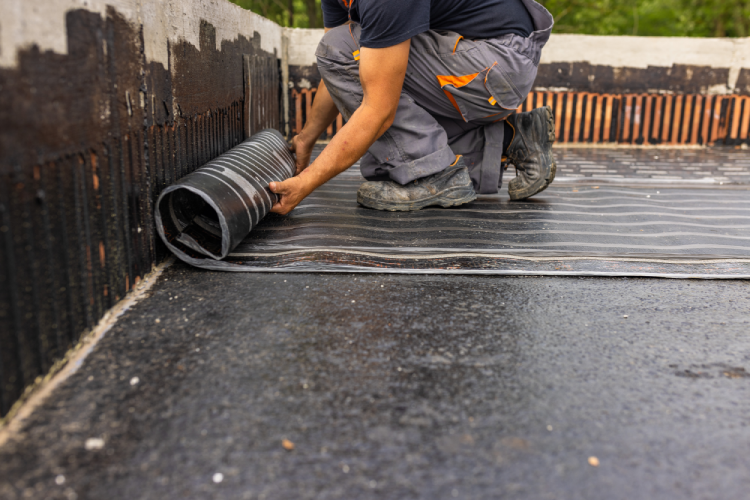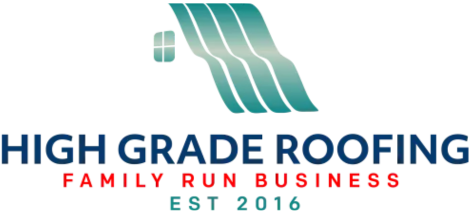Rubber roofing, also known as EPDM (Ethylene Propylene Diene Monomer), is a popular and durable roofing material that has become a go-to solution for flat roofs and low-sloped roofs in both residential and commercial properties. Known for its exceptional longevity and flexibility, rubber roofing offers homeowners and businesses a cost-effective, long-term option for protecting their properties against the elements.
Rubber roofing is made from synthetic rubber, primarily composed of recycled materials such as tires, sawdust, and slate dust. This makes it an environmentally friendly roofing option compared to traditional materials like asphalt. EPDM rubber is available in large sheets that are rolled out and adhered to the roof’s surface, providing a seamless, waterproof barrier.
Why Choose Rubber Roofing?
Rubber roofing offers several advantages that make it a popular choice among property owners and roofing professionals alike. Here are some of the key benefits:
Durability and Longevity
EPDM rubber roofing is known for its exceptional durability, often lasting 30 to 50 years or more when properly installed and maintained. Unlike other roofing materials that can crack or deteriorate over time due to weather exposure, rubber roofing remains flexible and resistant to temperature fluctuations, UV rays, and environmental stressors.
Weather Resistance
One of the standout features of rubber roofing is its ability to withstand harsh weather conditions. Whether exposed to extreme heat, cold, heavy rainfall, or snow, rubber roofing performs well in a variety of climates. It is also resistant to hail and wind damage, making it ideal for areas prone to severe storms.
Waterproof and Leak-Resistant
EPDM rubber roofing forms a watertight seal that prevents leaks, even on flat roofs where water tends to accumulate. Its seamless installation reduces the risk of water infiltration, providing superior protection against moisture-related issues such as rot, mold, and mildew.
Low Maintenance
Rubber roofing requires very little maintenance over its lifespan. Regular inspections and minor repairs, such as sealing small tears or adding additional adhesive, can keep the roof in excellent condition for decades. Additionally, EPDM roofs can be coated with reflective materials to reduce heat absorption, extending the roof’s life even further.
Cost-Effective
When compared to other roofing materials, rubber roofing is relatively inexpensive, especially considering its long lifespan. The low maintenance requirements and energy-saving properties of EPDM roofing also contribute to long-term cost savings for property owners.
Environmentally Friendly
Rubber roofing is considered an environmentally friendly option, as it is made from recycled materials. Additionally, because it has a long lifespan and can be recycled again at the end of its service life, it contributes less waste to landfills than other roofing materials.
Installation Process of Rubber Roofing
The installation of EPDM rubber roofing is typically straightforward for professionals but requires a high level of precision to ensure proper adhesion and water resistance. The process generally involves the following steps:
- Preparation of the Roof Surface
The existing roof must be cleared of debris, old roofing material, and any irregularities. The surface must be smooth and clean to ensure the rubber adheres properly.
- Measuring and Cutting the Rubber Sheets
EPDM rubber comes in large rolls, which are unrolled and measured to fit the specific dimensions of the roof. The sheets are then cut to size.
- Application of Adhesive
An adhesive is applied to both the roof surface and the underside of the rubber membrane. The adhesive ensures a strong bond between the rubber and the roof deck, preventing air pockets and ensuring a waterproof seal.
- Sealing and Fastening
Once the rubber membrane is in place, seams and edges are carefully sealed to ensure a seamless, leak-free surface. Some installations may require additional fasteners, particularly in areas prone to high winds.
- Final Inspection
After installation, the roof is inspected to ensure proper adhesion and to check for any potential weak spots that could compromise its integrity.
While EPDM rubber roofing is relatively easy to install, it’s important to work with experienced professionals to ensure a flawless result. This is especially true for complex roof designs or roofs with multiple penetrations (such as chimneys, skylights, or vents), where proper sealing is crucial.

The Importance of Choosing a Firestone Approved Installer
When it comes to rubber roofing, choosing a Firestone Approved Installer can make all the difference in the longevity and performance of your roof. Firestone is one of the leading manufacturers of EPDM rubber roofing materials, known for their high-quality products that meet rigorous industry standards.
Becoming a Firestone Approved Installer involves undergoing specialized training to ensure that installers are fully equipped to handle Firestone’s EPDM roofing systems. Here are some reasons why working with a Firestone Approved Installer is essential:
Expert Knowledge and Skill
Firestone Approved Installers are trained to install EPDM roofing systems according to the manufacturer’s specifications. This ensures that the roofing material is applied correctly, reducing the risk of future issues such as leaks, improper adhesion, or premature failure.
Access to Premium Materials
As a Firestone Approved Installer, we have direct access to Firestone’s top-of-the-line EPDM rubber roofing materials, ensuring that your roof benefits from the latest advancements in roofing technology and superior products.
Comprehensive Warranties
When you choose a Firestone Approved Installer, your roof may be eligible for an extended manufacturer warranty. These warranties provide peace of mind, knowing that your investment is protected in the long term. In addition to the installer’s workmanship guarantee, Firestone’s warranty offers added protection against material defects.
Long-Term Performance
Because Firestone Approved Installers have been vetted for quality and reliability, you can trust that your rubber roofing installation will meet the highest industry standards. This ensures long-term performance, energy efficiency, and protection for your property.
Rubber roofing is an excellent choice for property owners looking for a durable, low-maintenance, and cost-effective roofing solution. Its flexibility, weather resistance, and longevity make it ideal for flat and low-sloped roofs. Choosing a Firestone Approved Installer ensures that your rubber roof is installed to the highest standards, providing you with peace of mind and long-lasting protection. With the right materials and expert installation, rubber roofing can provide decades of worry-free service.




